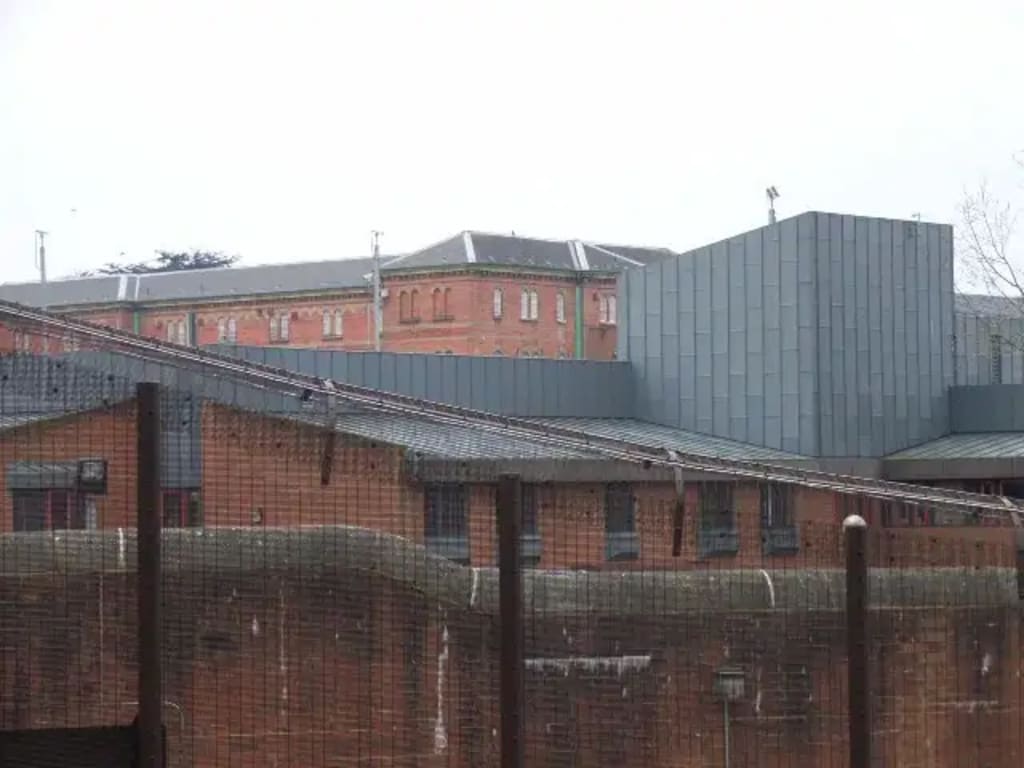The Institutional Racism That Killed Three Men at Broadmoor Psychiatric Hospital
Michael Martin, Joseph Watts and Orville Blackwood lost their lives in similar circumstances.

Many criticisms over the years have been levelled at Broadmoor and the treatment of the patients within it. Over the years, there have been escapes, rooftop protests and murders, but one of the less well-reported issues is the death of three African men within eight years.
The subsequent enquiry over these deaths identified large amounts of racism within the institution. It also examined the general treatment of black men and women with mental health issues.
Black people are twice as likely to be sent to mental institutions by police or the courts. Once there, the treatment they receive raises many questions.
Michael Martin
In July 1984, Martin was killed during an incident at Broadmoor.
Martin was physically restrained, stripped of his clothing and injected with 500ml of one sedative and 200ml of another. A nurse carried this out, which was common practice at Broadmoor.
The fact that he had been administered a further 400ml of sedative earlier in the day was never noted. He had also eaten just before the sedation. When he was placed in a side room, he choked to death on his own vomit.
His body also showed signs of physical injury from the restraint, but this issue never concerned the subsequent enquiry resulting from his death.
The enquiry into the death of Michael Martin uncovered many areas of improvement. The most startling was that it recommended that people should not be administered sedative drugs by anyone other than a medical practitioner.
When one puts a drug into a human being, sometimes against his will, one cannot predict with complete certainty what will happen. The tragedy in Michael's case was that the mixture or the cocktail - call it what one will - of drugs undoubtedly led to vomiting, as the report shows, and to his death.
The enquiry also noted that Broadmoor was inadequately funded. Money was the root of many problems there. For example, they did not have the staff for a doctor to be on duty in every ward. The facilities were also seen as inadequate.
Two months after his death, a team visited Broadmoor and discovered that his name had been crossed off on the wall with RIP next to it and a picture of a cartoon duck.
Joseph Watts
Much mystery surrounds this second death. Little information is available on the patient or what happened to him. What is known was that Watts was killed in August 1988, in similar circumstances to Martin.
He had a violent altercation with the staff, was sedated and placed in seclusion, where he died.
Orville Blackwood
Jamaican born Blackwood died on 28th August 1991, following administering large doses of antipsychotic medications.
Blackwood had moved to England with his mother when he was a child. In his 20s, it was hard to find employment due to low academic attainment. As a result, he became involved in petty crime simultaneously; his mental health started deteriorating.
In January 1982, he became known to mental health services. Then, in January 1986, he went to rob a betting shop using a toy gun. He received a three-year sentence for this crime and was sent to HM Prison Grendon.
Once at HM Grendon, he was noted in a state of paranoia and aggression, resulting in him trying to hang himself. In October 1987, he was transferred to Broadmoor Hospital.
On the morning of 28th August 1991, he made his way voluntarily to seclusion, having been placed there for refusing to attend his occupational therapy session.
Several hours later, a group of health professionals entered his room and he became aggressive. Under his doctor's instruction, he was held down and injected with a major tranquilliser, promazine. He was given three times the maximum dose considered safe.
He was then injected with twice the recommended dose of fluphenazine. Blackwood died almost immediately.
His cause of death was noted as cardiac failure associated with administering phenothiazine drugs. The official ruling was accidental death.
The enquiry noted many areas of improvement, but one of the saddest was that it noted that no one thought to ask him why he did not wish to attend his occupational therapy session that morning.
Several questions were asked as to why Blackwood had been sent to Broadmoor for a minor crime; he had also completed his original sentence but was still detained.
Similarities in Death
All three of the deaths had startling similarities. They were all black and diagnosed with schizophrenia. Each died after being placed in seclusion following a disagreement or violence.
None of them was on healthy diets; all were overweight. Each of them was well-liked but feared when they became violent.
Independent Inquiry
Due to Blackwood's death, the Special Hospitals Service Authority set up an independent inquiry in September 1991. The enquiry, led by criminology professor, Herschel Prins, supported that Broadmoor showed racism towards the patients. Ten per cent of black patients within the setting had not committed any crime.
The enquiry made forty-seven separate recommendations. The report identified how hospital admissions of black people were more likely to become known to the police. They were then more likely to be detained and placed in secure care.
Once within the system, they were more likely to be diagnosed with schizophrenia and given higher doses of medication; they were also less likely to receive psychotherapy.
Investigators said they heard staff refer to the patients as 'big, black and dangerous.' The workforce was almost entirely white.
They suggested that race awareness training programs be implemented. It also criticised the poor quality of nursing skills. In addition, the staff team were seen to have an insensitive attitude towards patients.
Institutional Racism
Patients had reported racism in the hospital and stated that the staff did not recognise the subtle way racism is operated in the setting. Broadmoor hospital is a white, middle-class institution in a rural location in Berkshire.
African-Caribbean patients from poor inner city areas find themselves in a rural alien environment. Many of the nurses know each other and come from military-type backgrounds; they do not understand the needs and cultural differences of the patients.
The enquiry found that treating all patients as equals regardless of ethnicity was unacceptable; they needed management and staff to recognise the differences and cater for them. They also suggested that black staff be appointed to management positions.
Many of the staff members considered the behaviour of black patients to be due to hostility rather than psychotic and used drugs to control them rather than counselling or psychotherapy to treat them
Despite the criticism of the hospital, Clara Buckley, Matin's mother, described the inquiry as a coverup and pointed out that no one had ever been punished for causing her son's death.
The hospital almost immediately dismissed two of the main recommendations, one of these was for an outside consultant to follow up on the inquiry; it stated that the hospital's internal reform procedure was adequate to handle the situation.
Although no other deaths have been reported in Broadmoor since then, it is unclear whether the extensive range of improvements was made. Life within Broadmoor continues to be criticised by patients and those close to them.
About the Creator
Sam H Arnold
Writing stories to help, inspire and shock. For all my current writing projects click here - https://linktr.ee/samharnold






Comments
There are no comments for this story
Be the first to respond and start the conversation.